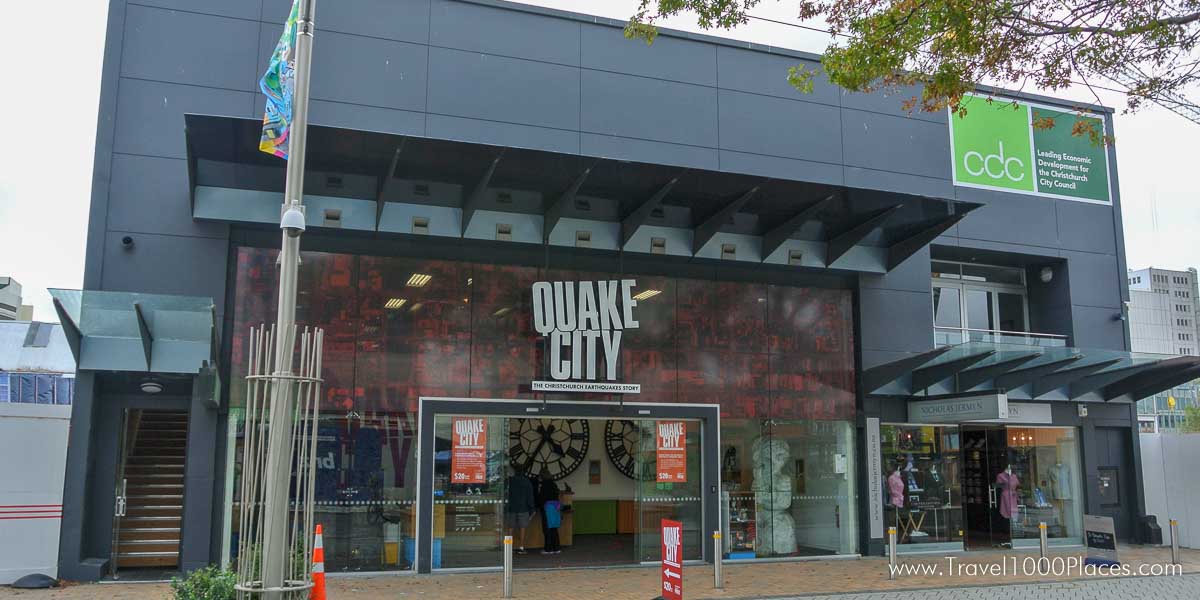
↦ find all of our Christchurch travel articles tagged as ‘Christchurch’: Travel Christchurch
Sightseeing Overview
- Chief Post Office or Christchurch Central Post Office, originally known as the Government Building, is located in Cathedral Square, Christchurch. Address: 31 Cathedral Square
- Cardboard Cathedral in Christchurch is the transitional pro-cathedral of the Anglican Diocese of Christchurch opened in August 2013. It was designed by architect Shigeru Ban. 234 Hereford Street.
- Cathedral Square – Christchurch Cathedral, damaged during the earthquake 2011.
- The Press Building (Cathedral Square). Address: 32 Cathedral Square
- Canterbury Museum — Rolleston Avenue.
- Clock Tower (Victoria St @ Salisbury St)
- Bridge of Rememberence: The Bridge of Remembrance is a war memorials in Christchurch. It is dedicated to those who died in World War I.
- City Mall City Mall is the main pedestrian mall in the central city of Christchurch, comprising two sections of Cashel Street plus the Bridge of Remembrance and one section of High Street.
- Christchurch Town Hall (86 Kilmore Street)
- Colombo Street is a main road of the city of Christchurch. It runs south-north through the center of Christchurch with a break at Cathedral Square.
- Christchurch Arts Centre (301 Montreal Street) was a hub for arts, crafts and entertainment in Christchurch. It is located in the neo-gothic former University of Canterbury buildings.
- The Civic in 194-198 Manchester Street, Christchurch Central City, was one of the former civic buildings of Christchurch City Council. Built in 1900.
- 185 Empty chairs — remembering the 185 people who lost their live 22-February 2011
- reStart project downtown — container stores
- International Antarctic Centre
- Christchurch Botanic Gardens / Hagley Park
- Tramway
- Gondola
- The Arts
- University of Otago in Christchurch Address: 5/2 Riccarton Avenue, Christchurch, Canterbury 8011
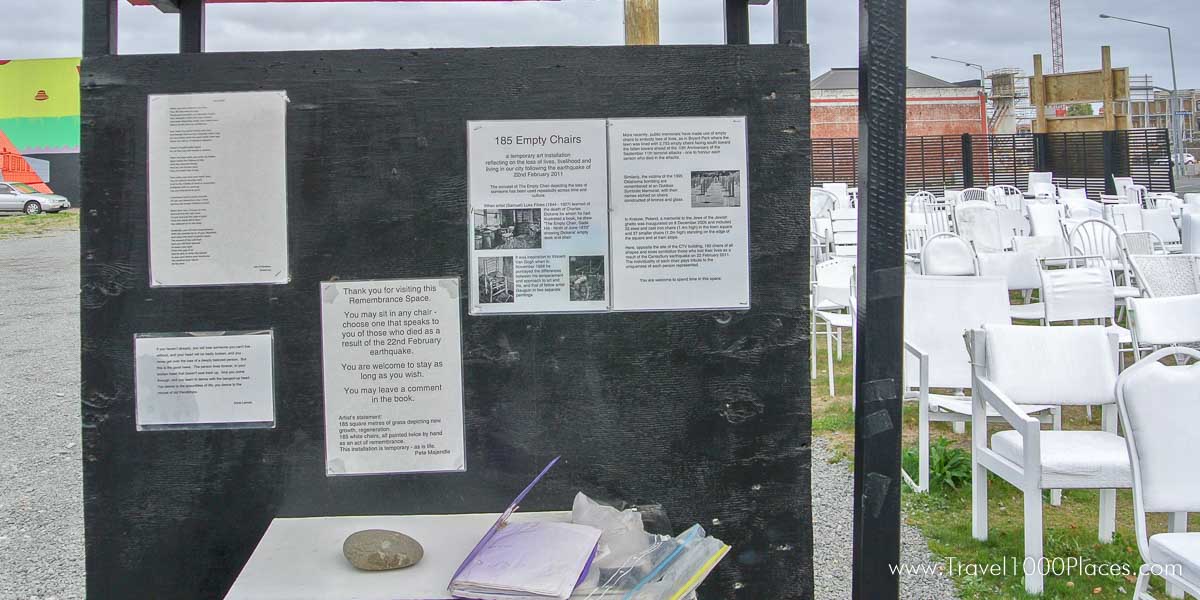
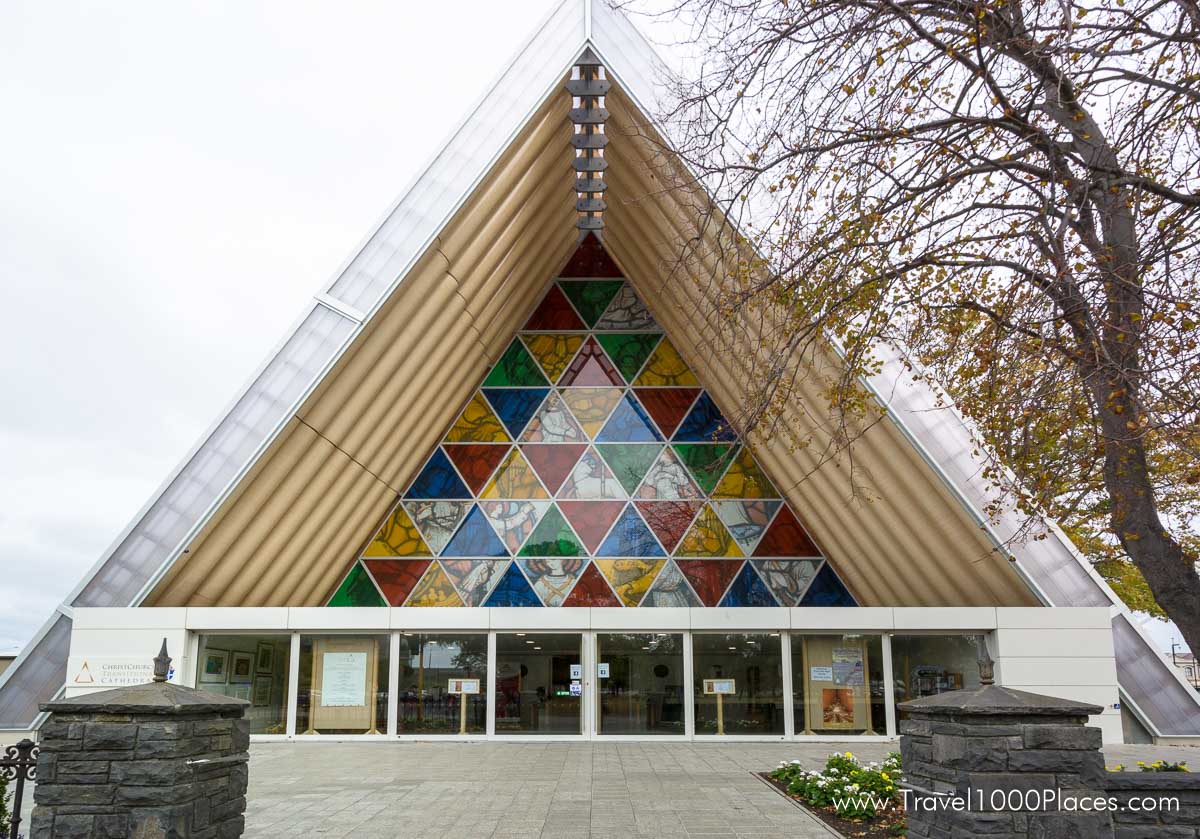
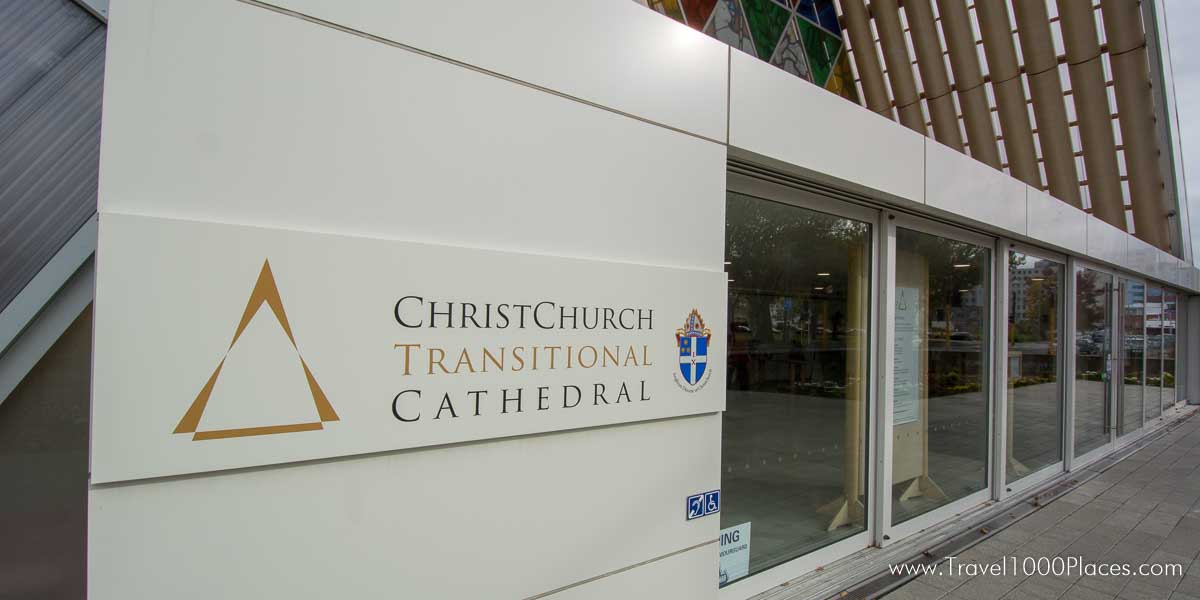
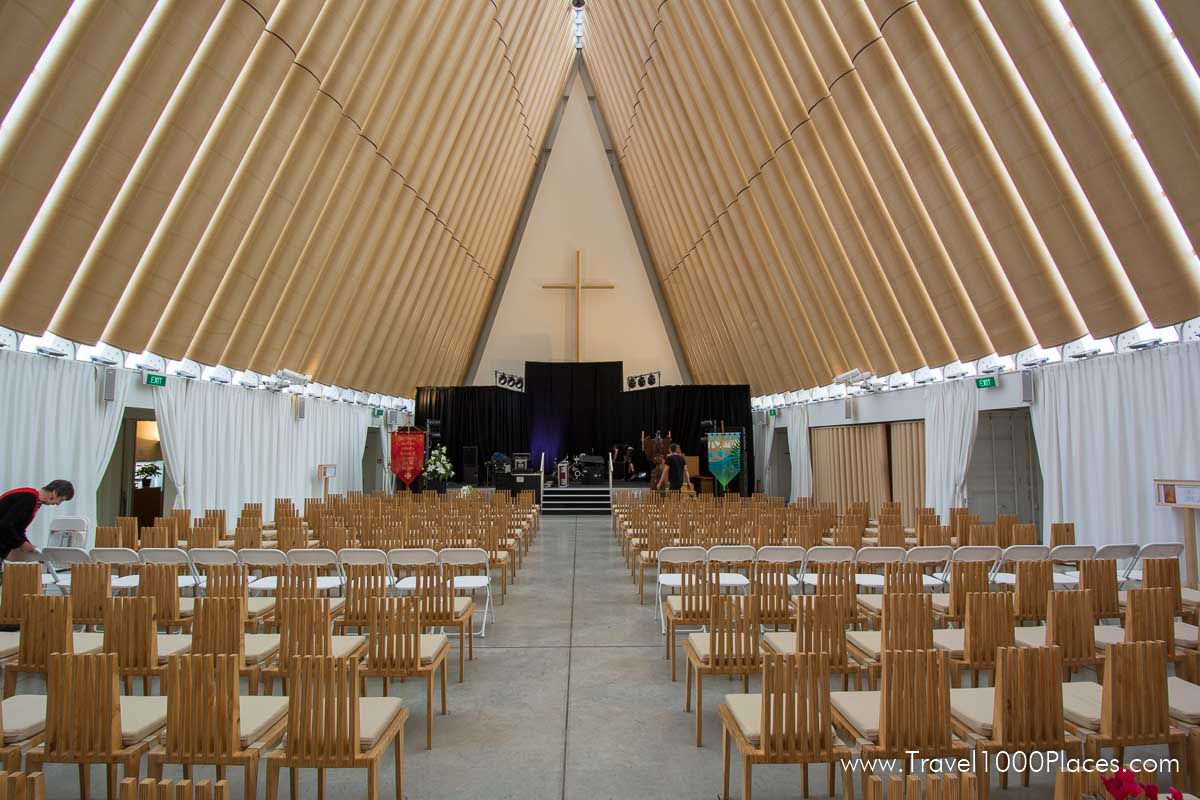
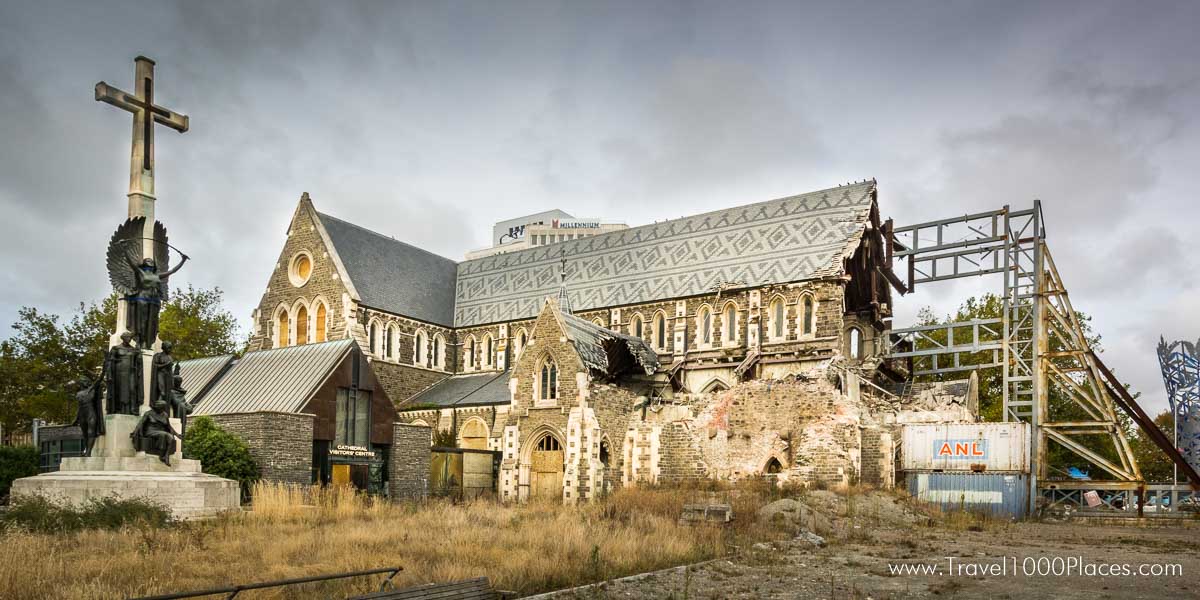
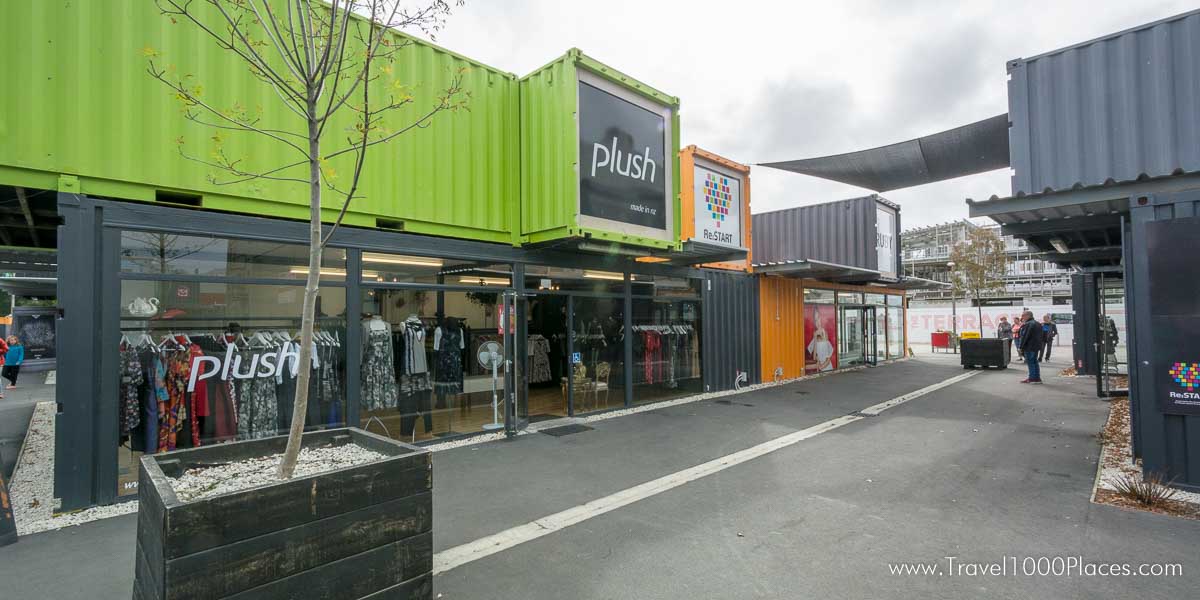
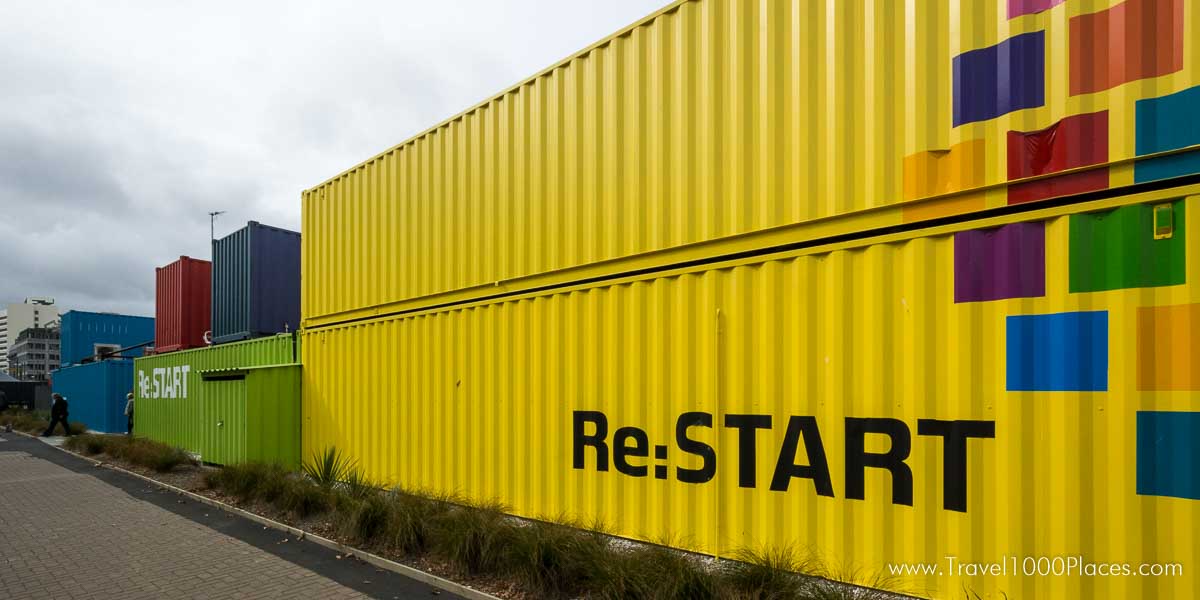
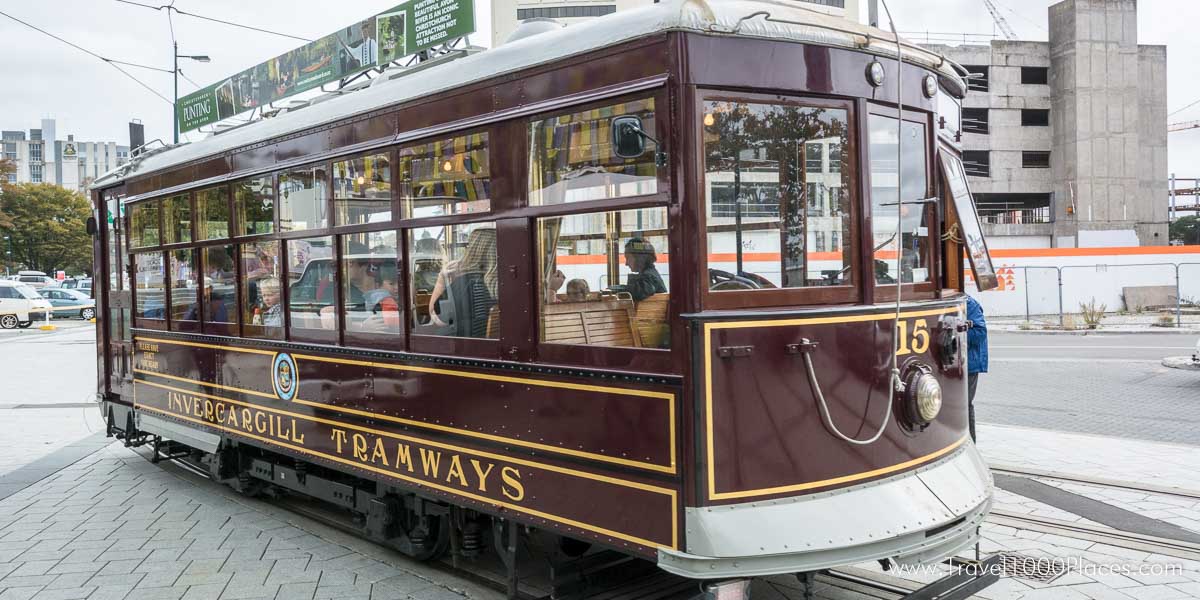
Christchurch Antarctic Centre
Established in 1992, the Antarctic Attraction is located in the heart of a working Antarctic campus here at Christchurch International Airport. It is from here that many Antarctic missions are organised. With this in mind the Antarctic Attraction is designed to bring a powerful and memorable experience of Antarctica to visitors in a fun, exciting, informative and commercially successful way.
Much time has been invested in ensuring our world class attraction does more than entertain. It has set out to convey the global significance of the ‘frozen continent’ to audiences of all ages and nationalities.
Penguin Encounter
The nocturnal nature of the Little Blue penguin means that most people miss out on sharing in the magic of these little birds.
The New Zealand Penguin Encounter is New Zealand’s first combined indoor/outdoor penguin viewing area with capacity to hold up to 26 Little Blue penguins.
With its centrepiece being a penguin life support area and 80,000 litre pool, the Encounter allows visitors to view Little Blue penguins in a Banks Peninsula natural-themed environment that can be accessed on two levels.
The penguins held here are birds that have been rescued and cared for, some since they were chicks. Due to physical disabilities that have left them defenceless, many of them would not have survived on their own back in the wild.
Location
The International Antarctic Centre is located across the Christchurch Airport.
38 Orchard Road, Christchurch Airport, New Zealand
Website: www.iceberg.co.nz
Christchurch Tramway
Christchurch Tramway is a quality inner city tour experience that combines the heritage of the trams, attractions and historic buildings with the culture of the Garden City.
A unique way to view the heart of Christchurch City, in the South Island of New Zealand.
Ride through the city centre in the restored vintage trams, while your tram driver gives an informative commentary. You can leave the tram at any one of the 11 stops, rejoining it later.
Explore the Arts Centre, Art Gallery and Canterbury Museum, picnic in the Botanic Gardens or in Victoria Square, where you can watch the Edwardian punts floating down the Avon River.
Visit also the Tram Station at Cathedral Junction in New Regent Street, a restored Art Deco pedestrian mall.
Website: www.christchurchattractions.nz/christchurch-tram/
Christchurch Gondola
It is a spectacular ride far above the city, as your 4 person cabin lifts you gently up to 500m (1,500 ft) above sea level over the 945 m ride. Stunning 360° views extend over Pegasus Bay and the Pacific Ocean to Kaikoura; over Banks Peninsula, Lake Ellesmere and Lyttleton Harbour, and across the Canterbury Plains to the Southern Alps.
Once you have reached the top, there’s more: Perched on the rim of the Mt Cavendish crater, the summit complex rises up 4 stories, housing not only the gondola’s machinery, but also The Summit Café, The Pinnacle Restaurant and Events Centre, Shops, and the Time Tunnel Ride Experience.
Outside, take advantage of several walking tracks which are marked and suited for most fitness levels.
Getting there
Address: Gondola Base Station, 10 Bridle Path Rd, Heathcote Valley, Christchurch 8022, New Zealand
The Gondola is just a 15 minute drive from central Christchurch. The Base station of the Gondola is in Heathcote Valley where you will find plenty of parking for cars and coaches. The Summit Station – including the Time Tunnel, Shop and café – is at the top of Mt Cavendish. The Gondola trip up to the summit takes 10 minutes one way at normal speed.
There is also a Gondola Shuttle which operates daily and departs the central city from outside the Canterbury Museum on Rolleston Avenue
Website: www.christchurchattractions.nz/christchurch_gondola/
The Arts
There are more than forty points of cultural interest within the central city area. More than half of these are art galleries, which, alongside our theatres, symphony orchestra and regional opera company, are an indication that cultural life in the city of Christchurch continues to thrive.
Christchurch Art Gallery
It does so in a way that increasingly places it in an international context. The splendid new Christchurch Art Gallery is the most obvious example of this and our visual artists produce many others.
Arts Centre
This English influence is further highlighted with a visit to the Arts Centre, a few minutes walk from the river’s edge. The old Canterbury University campus, it is the hub of Christchurch’s arts and crafts, featuring galleries, studios, theatres, cinemas, restaurants and bars. It is also the site of New Zealand’s oldest lecture theatre.
Websites:
Christchurch Symphony Orchestra
Christchurch Court Live Theatre
Christchurch Botanic Gardens
On 9th July 1863 an English oak (Quercus robur) was planted in the gardens to commemorate the marriage of the English monarch Queen Victoria’s eldest son Prince Albert Edward to Princess Alexandra of Denmark.
It was planted by the first Government Gardener, Enoch Barker, and is accepted as the foundation date of the gardens although not much appears to have been started until the following year.
This Oak tree is located close to the Avon River near the footbridge leading to the Daffodil Woodland. It is marked with a plaque that can be found at the base of the tree.
The establishment year of the Christchurch Botanic Gardens in 1863 is shared with the Dunedin Botanic Gardens, making these two the oldest botanic gardens in New Zealand. A special year for both gardens therefore will be 2013, when they celebrate their 150th anniversary. Within the Australasian region, the oldest botanic garden is the RBG Sydney (1816), followed by the RBG Tasmania in Hobart (1818), RBG Melbourne (1846) and the Adelaide Botanic Gardens (1855). The Christchurch Botanic Gardens, while not being the oldest, is relatively long established and, thus historic.
What standing does the Christchurch Botanic Gardens have in NZ and overseas?
The Gardens are frequently referred to in terms of international significance and sometimes as being a ‘top’ botanic garden. How justified are such expressions of support? At this point in time no organisation (nationally or internationally) is critiquing or officially ranking gardens. Globally, a cluster of top level botanic gardens includes the RBG Kew and Edinburgh, Kirstenbosch in South Africa, Berlin, Singapore, Missouri and New York/Brooklyn. Some tens of thousands of gardens make up the next level. These gardens are seen in the industry as ‘top’ gardens for a number of reasons, including:
the size of the gardens area,
the size and significance of the plant collections,
the standard and number of functions and services offered (conservation, education and research),
the age (history) of the gardens,
and visitor numbers achieved.
Christchurch is yet to reach either of these levels of significance with its Gardens.
In Australasia, at the present time, there is little doubt that the RBG Sydney and Melbourne, the Adelaide Botanic Gardens and Kings Park Botanic Garden in Perth have significantly higher overall status than Christchurch. Christchurch Botanic Gardens probably lies within the second tier of Australasian gardens that include Dunedin, RBG Tasmania, and Wellington.
Where the Christchurch Botanic Gardens is of special significance is that the Gardens is in the setting of Hagley Park. The iconic nature of the Gardens is reinforced when the overall green space size of the Gardens and Hagley Park is compared with other (international) urban green space areas. In this area the Gardens falls within the top 20.
How many plants are grown in the Gardens?
The gardens have over 10,000 exotic and native plants within the grounds.
How large are the grounds of the Botanic Gardens and Hagley Park?
The Botanic Gardens consists of 21 hectares of land with Hagley Park consisting of 164 hectares of land. The botanical collections located within Hagley Park that are included within the Botanic Gardens collections cover approximately 11 hectares. These are the Heritage Rose Garden, the Primula Garden, the Pinetum and the Kate Sheppard Memorial Walk. The combined area for the Christchurch Botanic Gardens and Hagley Park is approximately 185 hectares.
Where is the Christchurch Botanic Gardens located?
The Christchurch Botanic Gardens is located in the central business district, with the Cultural Precinct. It is 15 minutes walking distance from the city centre. The gardens are enclosed, with the exception of one side (Rolleston Avenue), by Hagley Park, with the Avon River running between the two.
Website: www.ccc.govt.nz/parks-and-gardens/christchurch-botanic-gardens
Nature Experiences: Eco Tourism Attractions
The geographical diversity of Canterbury and the strong focus on conservation in the region provide numerous opportunities for the eco tourist.
Christchurch, nearby Banks Peninsula and the Southern Alps all offer unforgettable experiences that are uniquely Canterbury.
Willowbank Wildlife Reserve
This reputation is matched by the Kiwi breeding programme at Willowbank Wildlife Reserve.
For those wanting to observe the New Zealand icon as nature intended, the reserve offers night tours. This is because the flightless bird is nocturnal and observing its habits at night offers the real experience.
60 Hussey Road, Christchurch
Website: www.willowbank.co.nz
Travis Wetland
Another must for the nature lover is Travis Wetland, situated in North-West Christchurch. Unique for its location in an urban area, the wetland is home to numerous native plants, some of which were thought to be locally extinct.
Over 55 species of bird have been recorded in the wetland and over 600 insect species.
The existence of the wetland in an urban area reflects the region’s interest in conservation. A decade ago, the area looked destined for another housing development, but the local council stepped in to buy the land and prevent that from happening.
Website: www.traviswetland.org.nz
Wider Canterbury region…
While these examples highlight the range of options available for the eco tourist in Christchurch, the wider Canterbury region is also rich with opportunities.
Banks Peninsula
Banks Peninsula, which became attached to the Canterbury mainland more than 10 million years ago after the eruption of two volcanoes, offers a host of activities.
Wildlife cruises of Lyttelton and Akaroa harbours, the sites of the volcanoes, are highly recommended.
Just 15 minutes from the centre of Christchurch, Lyttelton harbour is the home of the Hector’s Dolphin (Hector’s Dolphins), one of the world’s smallest and rarest species.
The cruises not only meet the dolphins and other marine wildlife, but also offer breathtaking views of the volcanic landscape.
Similar cruises can be taken from the historic French village of Akaroa, an 80 minute drive from Christchurch.
The Banks Peninsula Track provides another unforgettable experience for the more energetic traveler. The two or four day walk covers 35 kilometres of spectacular coastline, native bush, waterfalls and sandy beaches.
Walkers also come into contact with a diverse range of wildlife.
Southern Alps, Aoraki/Mount Cook
The Southern Alps are the other geographical feature that must be experienced by the eco tourist.
Aoraki/Mount Cook, deep in the alps, is New Zealand’s largest alpine park, incorporating the highest mountains and biggest glaciers.
There is virtually no forest in the 70,000 hectare park, but instead it is alive with a diverse range of alpine plants. Birdlife is restricted to species that like an open habitat such as the New Zealand Kea.
From Aoraki/Mount Cook Village, there are 10 walks ranging from leisurely strolls around the village to alpine routes for the experienced tramper.
Guided ski trips are available for intermediate skiers, while regular scenic flights are a great way to see the area for the less energetic.
See also Canterbury Region…
Canterbury Region
Flying into Christchurch International Airport, visitors get a spectacular introduction to the diversity and beauty of the Canterbury region.
The bird’s-eye views of the patchwork-like Canterbury Plains and how they interact with New Zealand’s largest and most picturesque mountain range, the Southern Alps, offer an unforgettable welcome.
Canterbury Plains
Spanning 190 kilometres, the Canterbury Plains are New Zealand’s largest area of flat land at low altitude.
Converted from indigenous tussock into productive farm land by the early settlers in the mid 19th century, they represent a cornerstone of the Canterbury economy.
Aoraki Mount Cook
To the east of the plains is the South Pacific Ocean, while the western boundary is marked by the Southern Alps, extending 550 kilometres in a south westerly direction from beyond Canterbury’s northern border.
The beauty of the alps can be experienced by a visit to Aoraki Mount Cook, New Zealand’s highest peak, while living remnants of the ice age in the form of spectacular glaciers are also within driving distance of Christchurch.
Banks Peninsula
The other major geographical feature of Canterbury is Banks Peninsula, a cluster of volcanic hills on the eastern coast. About 10 million years ago, this area was an active volcanic island. But after two eruptions, the sediment brought down by the glaciers and rivers of the Southern Alps enlarged the Canterbury Plains until the island became joined to the mainland.
The two volcanoes, which are now the Akaroa and Lyttelton harbours, left what have become sheltered valleys, cliffed headlands and dramatic seascapes from throughout the peninsula.
While the Canterbury Plains, the Southern Alps and Banks Peninsula illustrate the geographical diversity of the region, there are also other features scattered throughout that contribute to this uniqueness.
Cave Stream Scenic Reserve
At the top of this list is the Cave Stream Scenic Reserve. About two hours west of Christchurch, a 362 metre long cave within the reserve would have to be one the most outstanding natural features in Canterbury.
The cave is in the Castle Hill basin, named from the castle-like forms of the prominent limestone outcrops. The cave, which takes an hour to walk through, has formed from the dissolving of limestone over time.
It is not only the unique nature of the geography and landscape that sets the region apart, but some of the extraordinary engineering feats that have been accomplished with it.
Otira Tunnel
This stretches back to the building of the Otira Tunnel in 1923. The structure was built to create a rail link between Canterbury and Greymouth on the western side of the Southern Alps.
Built with astounding accuracy in the days before lasers and other technology, the 8,529 metre tunnel was the longest in the British Empire at the time.
Waitaki dam and power station
In the following decade, another major engineering feat began with the opening of the Waitaki dam and power station. The Waitaki River is right on Canterbury’s southern boundary and its water is now used by eight hydro power stations. These, coupled with another one on nearby Lake Manapouri, now generate around 30 percent of New Zealand’s electricity.
Although these examples only highlight a fraction of the geographic diversity of the region and how it has been used, they do show that Canterbury has a special character like no other part of New Zealand.

